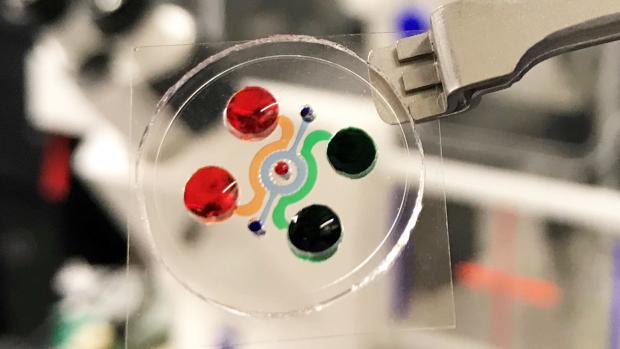Leukemia-on-a-chip: Dissecting the chemoresistance mechanisms in B cell acute lymphoblastic leukemia bone marrow niche

The leukemia-on-a-chip model allows researchers to study the disease easily, improving the chances for the development of potential treatments.
Weiqiang Chen, associate professor of biomedical and mechanical and aerospace engineering led this research.
B cell acute lymphoblastic leukemia (B-ALL) hijacks the bone marrow (BM) microenvironment to form leukemic BM “niches,” facilitating chemoresistance and, ultimately, disease relapse. The key to developing more effective, targeted therapies depends on researchers' ability to isolate and examine with these evolving, heterogeneous interactions among distinct B-ALL subtypes and their varying BM niches. Current in vivo methods limit that ability.
A team including researchers from the NYU Tandon School of Engineering's departments of Mechanical and Aerospace, and Biomedical Engineering, and from NYU Langone's Perlmutter Cancer Center and Department of Pathology demonstrated an in vitro organotypic “leukemia-on-a-chip” model to emulate the in vivo B-ALL BM pathology and comparatively studied the spatial and genetic heterogeneity of the BM niche in regulating B-ALL chemotherapy resistance.
In the study "Leukemia-on-a-chip: Dissecting the chemoresistance mechanisms in B cell acute lymphoblastic leukemia bone marrow niche," published in ScienceAdvances, the team used their system to describe the heterogeneous chemoresistance mechanisms across various B-ALL cell lines and patient-derived samples, showing that the leukemic perivascular, endosteal, and hematopoietic niche-derived factors maintain B-ALL survival and quiescence. Furthermore, they demonstrated the preclinical use of their lab-on-a-chip model to test niche-cotargeting regimens, which may translate to patient-specific therapy screening and response prediction.
This work was supported by the National Science Foundation, the U.S. National Institutes of Health, the Leukemia & Lymphoma Society, the New York State Department of Health (NYSTEM Program), and the St. Baldrick’s Cancer Research Foundation (I.A).


